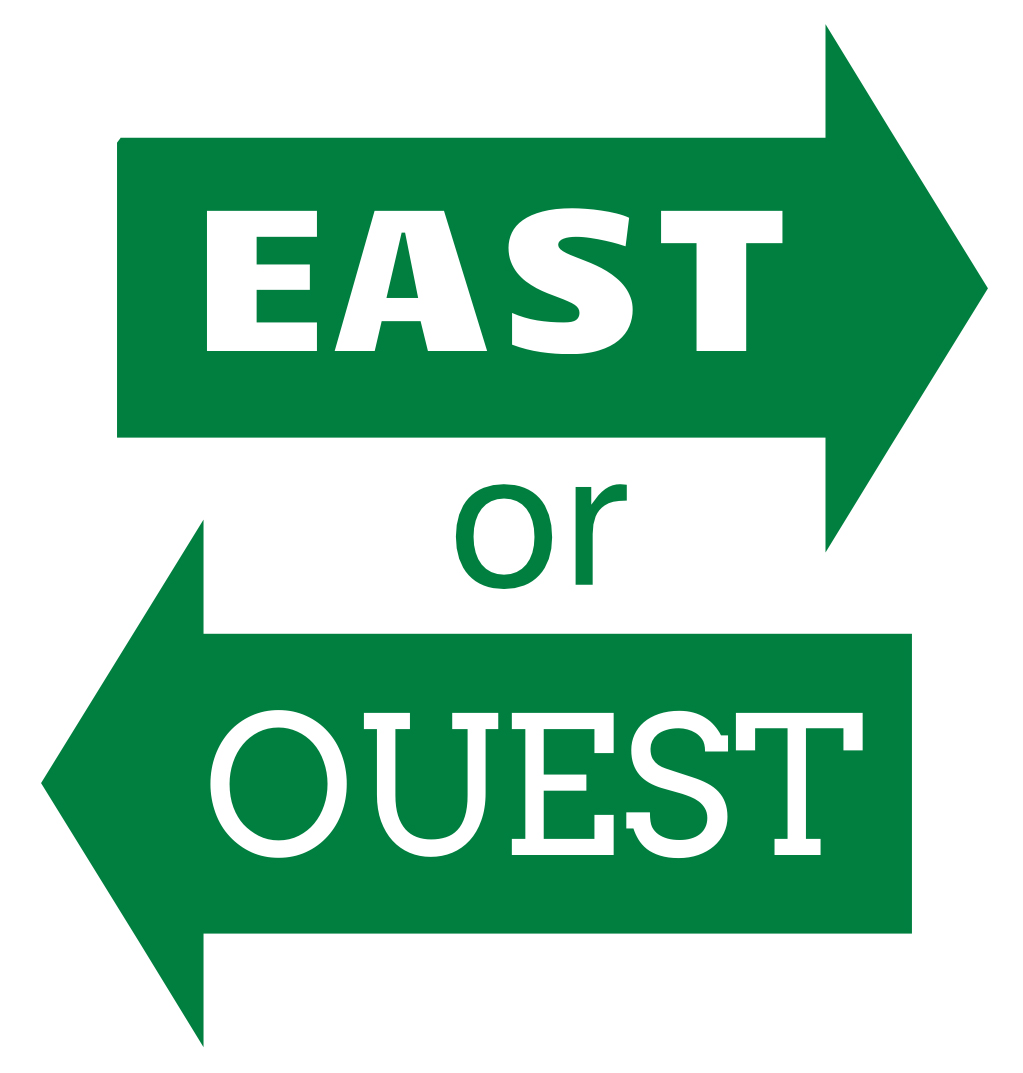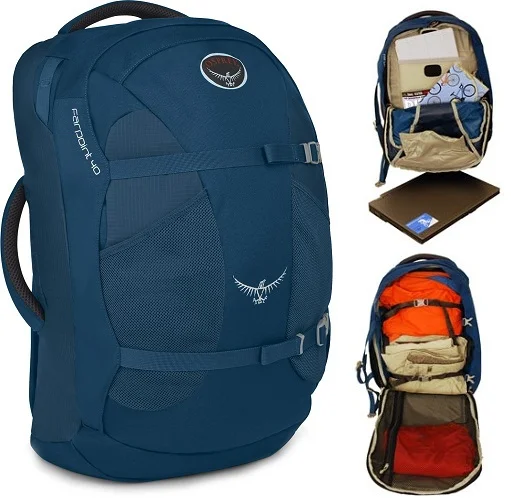Traveling Carry-On and Which Pack We're Taking
/When we first started thinking of taking this trip, I assumed that most people did the same thing - take huge packs and carry everything you might possibly need. I mean, what else would you do? Who knows when you might need those dress shoes or that third hat? Then I spent way too much time reading all the posts from the minimalist crowd and one day I thought, man, that’s awesome! I’d love to travel the world and never have to check a bag. I rushed home that night to tell Anaïs about it:
T: Babe, I read all these blog and forum posts about packing and what size pack to take.
A: Uhh huh.
T: A lot of travelers take small packs that they can carry on and they never have to check bags.
A: Right.
T: We should do that!
A: Uhh, duh? What else did you think we were going to do?
T: Well, ya know......a bigger bag?
A: (Hysterical laughter as she falls off the couch...)
This is one instance where her greater worldliness definitely had her better prepared for the task at hand. What was obvious for her took me a few hours of reading to get my head wrapped around, but it took me a good week to really appreciate all the ways that carry-on only bags would be the best bet for us. So, for those of you like me, here are some of the main reasons we feel like this is the best plan for us.
It gives us greater flexibility
A smaller bag makes it easier to move around and easier to make those mad dashes between connecting flights, buses, boats, etc. We tested the bag we chose during a trip to Texas and I’d never had an easier time moving through the airport. Packing/Unpacking becomes a quicker endeavor (which equals more sleep!). Plus, we hope to be able to take the bags with us onto buses and trains in those areas where it’s not always safe to put them in the luggage compartment or strap it to the top (not a guarantee, but at least its a possibility).
It forces us to focus on what’s important
We really had to take the time to think about all the items we were planning to take with us and decide if they were necessary for our collective happiness on the trip. We had to decide wants versus needs. Clothes? Need. Medicine? Need. Multi-function tool with built in compass, level, and sextant? Need, of course!...
We won’t have as much “stuff”
We had a two bedroom apartment in LA for the two of us. It was great because it gave our friends and family a place to stay anytime they wanted to come visit. When they weren’t around, though, that second bedroom turned into a storage space. The closet is full of clothes the majority of which we haven’t worn in the past 2 years. There’s also a memory foam mattress pad I haven’t used since college. And let’s not get started on the books we’ve saved from school that we’ll most likely never open again, let alone read. This is what I’m talking about when I say “stuff”.
We’re genuinely excited for the opportunity to get rid of what we never use. The majority of our possessions are going on the chopping block, to be sold for the best price possible or donated to a worthy cause. We’ll store a few things (actually used clothing, the world’s greatest waffle iron, and our 1962 mid-century dining table that A loves to death, for example), but most of it? Bye bye!
That same mentality guided as we made our clothing, gear, and technology purchases for our trip. We focused on items that we knew would be functional, durable, and if we’re lucky, look good. We wanted to have just enough to really enjoy the trip, not so much that we came to loathe our backpacks with vehement hatred. Plus, the less we carried, the fewer things we’d worry about losing.
Here are a few articles from other travelers explaining their thought-process behind choosing to go with carry-on bags for long-term travel:
20 Years Hence
Never Ending Voyage
LandingStanding
Traveling 9 to 5
The Actual Bag
Once we knew we were going for smaller bags, we had to decide what exactly we wanted from those bags. These are the main features we wanted and focused on them when selecting our bags:
- Carry-on size
- Lockable zippers
- Strong, durable materials
- Comfortable shoulder straps/hip and chest belts
- Panel Loading
We looked at more companies that we can remember: REI, RedOxx, Osprey, Kelty, Deuter, Gregory, and so on. We read hundreds of reviews and looked at ten times as many pictures. We spent hours at REI trying them on for size, stuffing them with whatever the friendly REI employees would let us test them out with, fidgeting and fussing over every little detail would imagine might possibly be important. In the end, our search focused on two main bags: the REI Vagabond Tour 40 and the Osprey Farpoint 40.
REI Vagabond
Credit: REI.com
Pros
- 40 liters, Panel loading
- Well ventilated back panel
- Lockable, strong zippers
- Top pocket that would be perfect for toiletries and tickets
- Comes with a rain cover
- Comfortable shoulder straps and hip/chest belts
- The hip belt had a pocket on it that was great for access to snacks or chapstick or whatever odds and ends you might need
- The shoulder/hip/chest belts can all be stored away for transit
- Laptop sleeve in the main pocket
- Plenty of compression straps
- Plenty comfortable with a full load
Cons
- The shoulder straps connected to the bag via a buckle (Click Here and look about 2/3rds down the left side of the picture. This is part of the system whereby you can store the shoulder straps for transit.
- The side pockets took up space in the main packing pocket
- 2 of the reviews said the buckles broke on them without heavy use
Osprey Farpoint 40
Credit: Osprey.com
Pros
- 40 Liters, Panel Loading
- Lockable zippers
- 3 compartments for storage
- Laptop/tablet sleeve
- 2 mesh pockets in the front that are perfect for water bottles
- Compression straps galore, both inside and out
- Shoulder/hip/chest belts can be stored away
- Plenty comfortable with a full load
Cons
- No rain cover included
- Not as well ventilated back panel
- No external loops to hang gear off of (such as wet shoes)
In the end, we both chose the Osprey Farpoint 40. Both packs fit all of our main criteria, so we had to think about the other facets we hadn’t prioritized. We liked how the Farpoint was wider than the Vagabond (which was taller) and how that makes it a little easier to use the packing cubes we’re utilizing. We preferred the system the Farpoint uses to stow away the shoulder/hip/chest straps. The external compression straps reached across the face of the pack as well, which should make them more useful. Plus, the Farpoint just fit us both better. We’ll be missing out on the top pocket, hip belt pocket, and included rain/travel cover that came with the Vagabond, but we felt like these options aren’t as valuable as the ones we mentioned above.
We’ll be sure to let you know later on whether or not we picked our bags on the right criteria. and a general update about the bags. We took a weekend trip with one to Texas and it was very easy to travel with, but that was on plush Virgin America and taking Uber rides to and from the airport (in LA at least).
Let us know - what bags do you travel with and what are some of the best features about them?
Note: We receive a small commission if you purchase through the Amazon link to the Osprey Farpoint 40. Thanks in advance!


